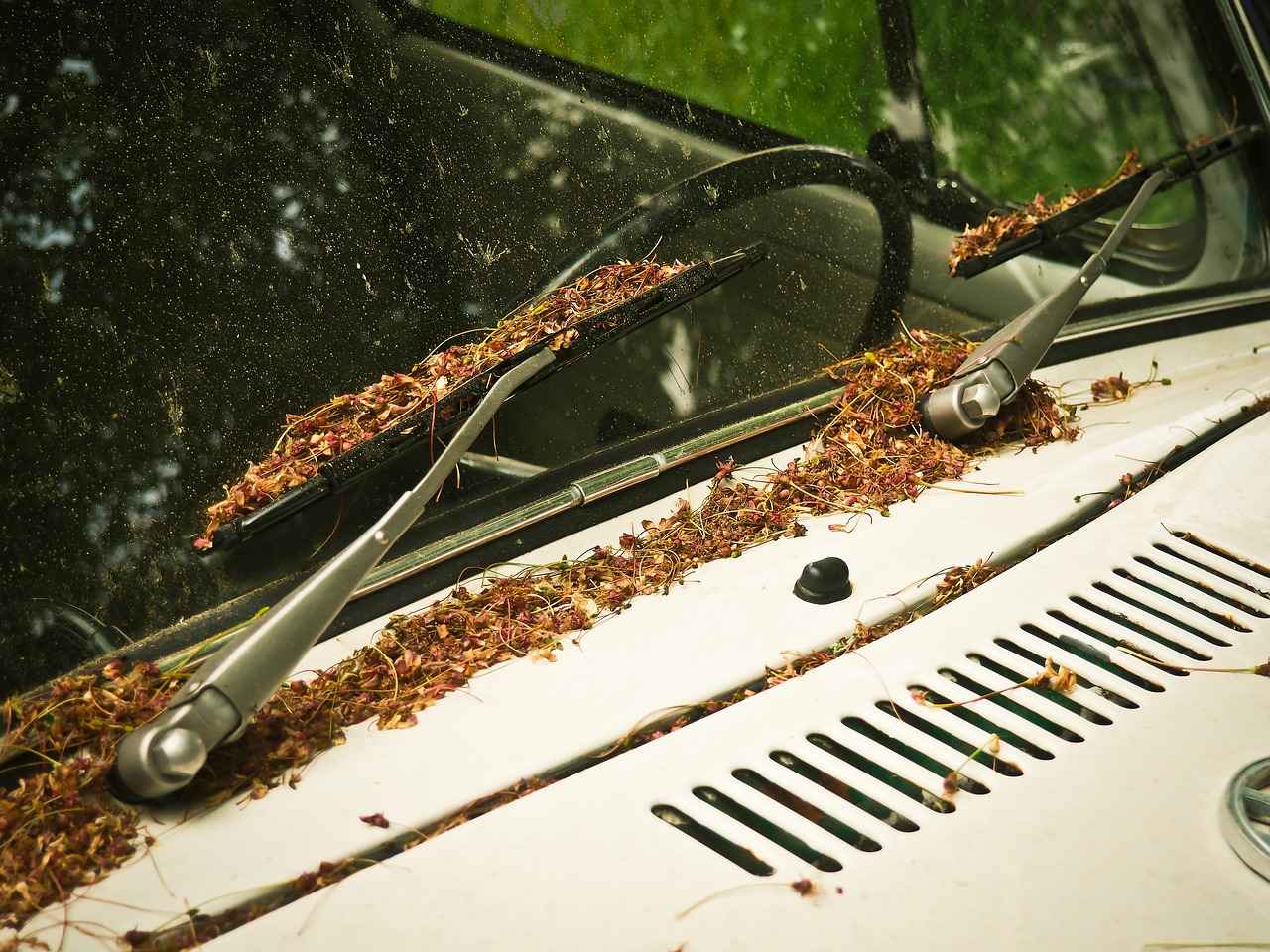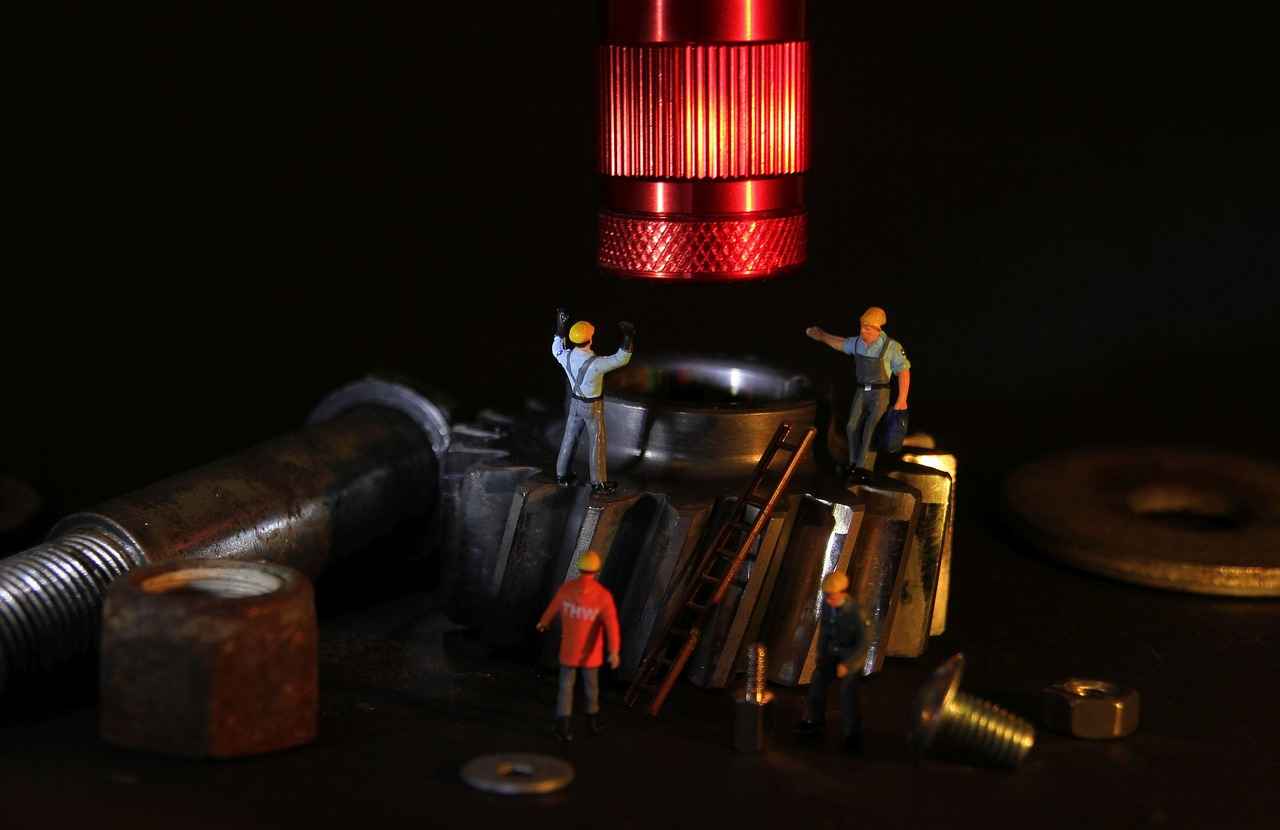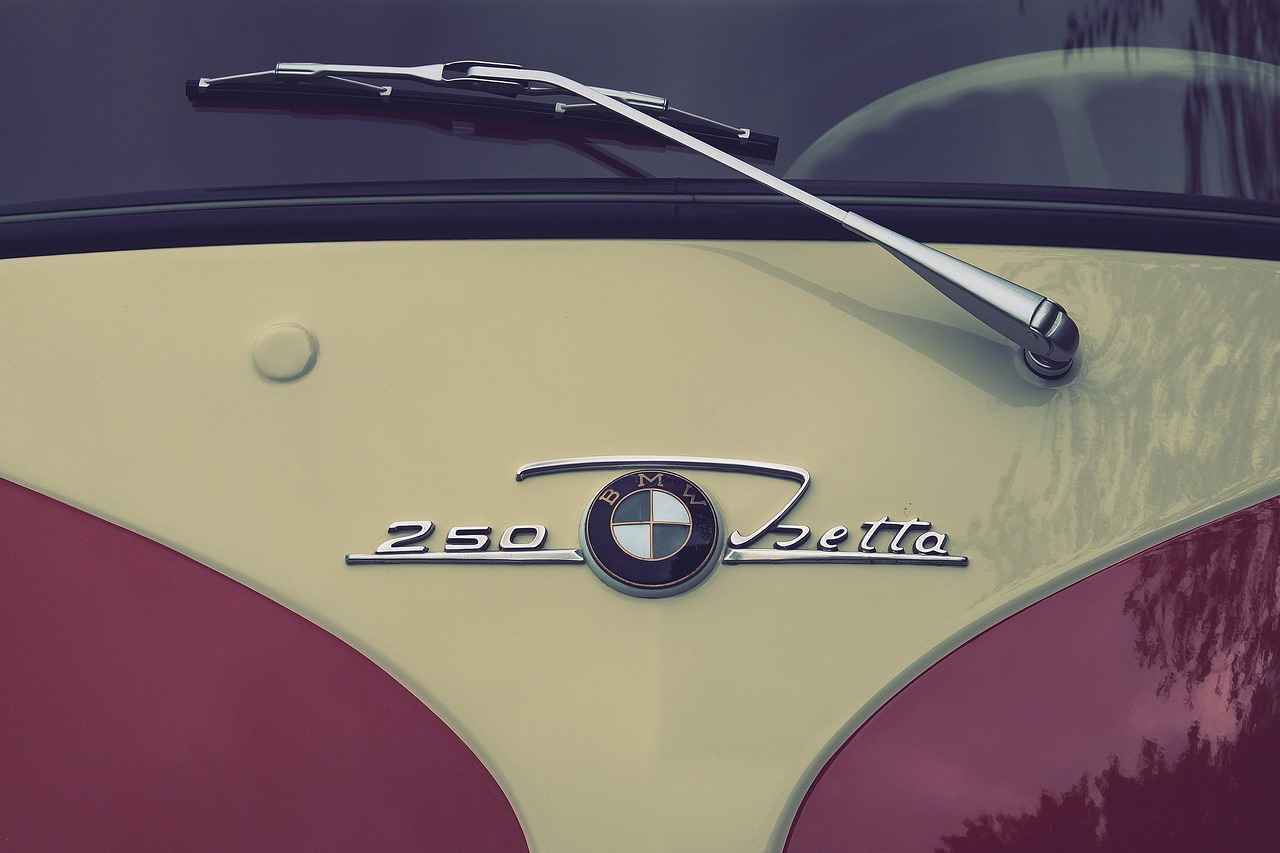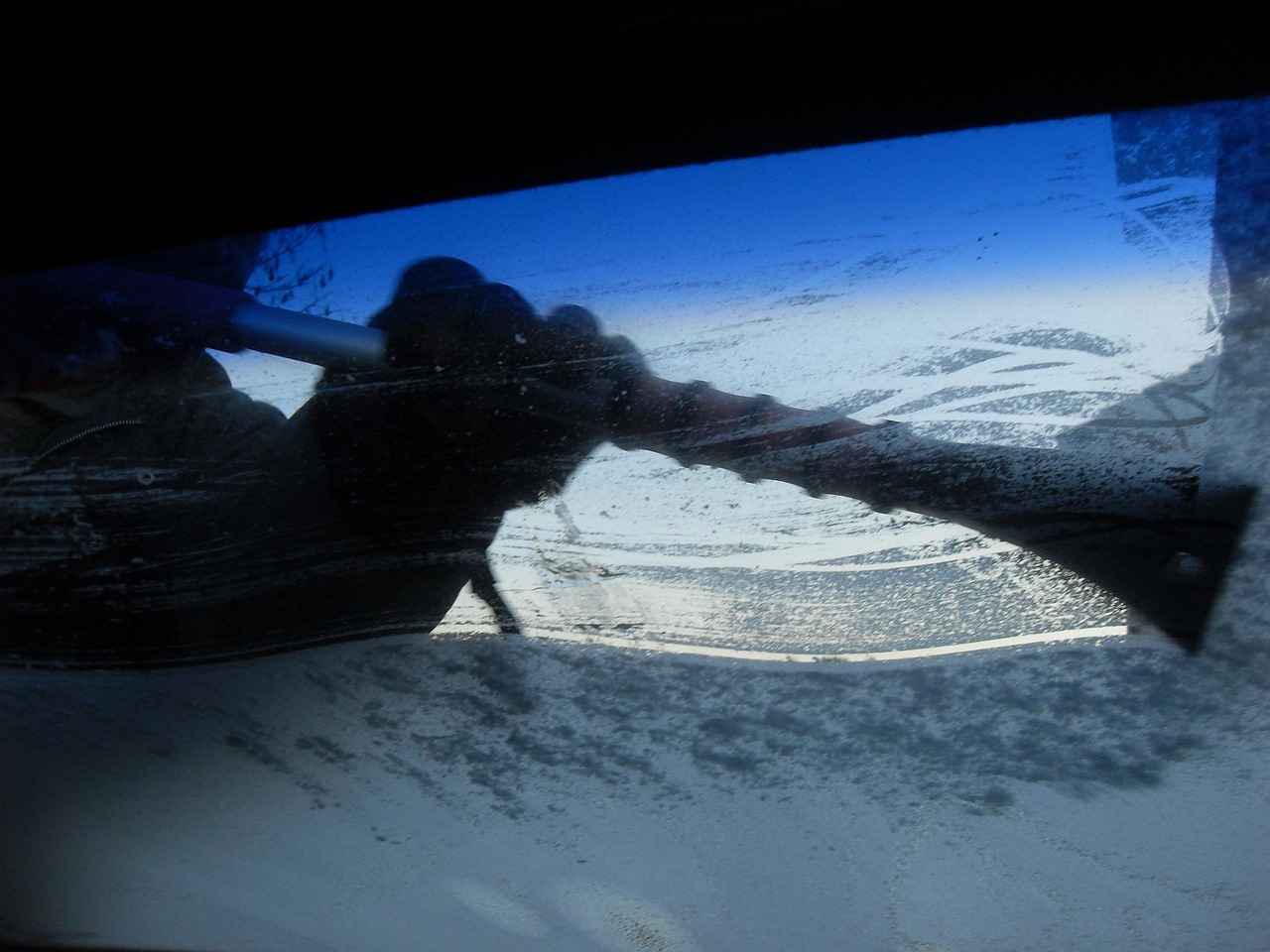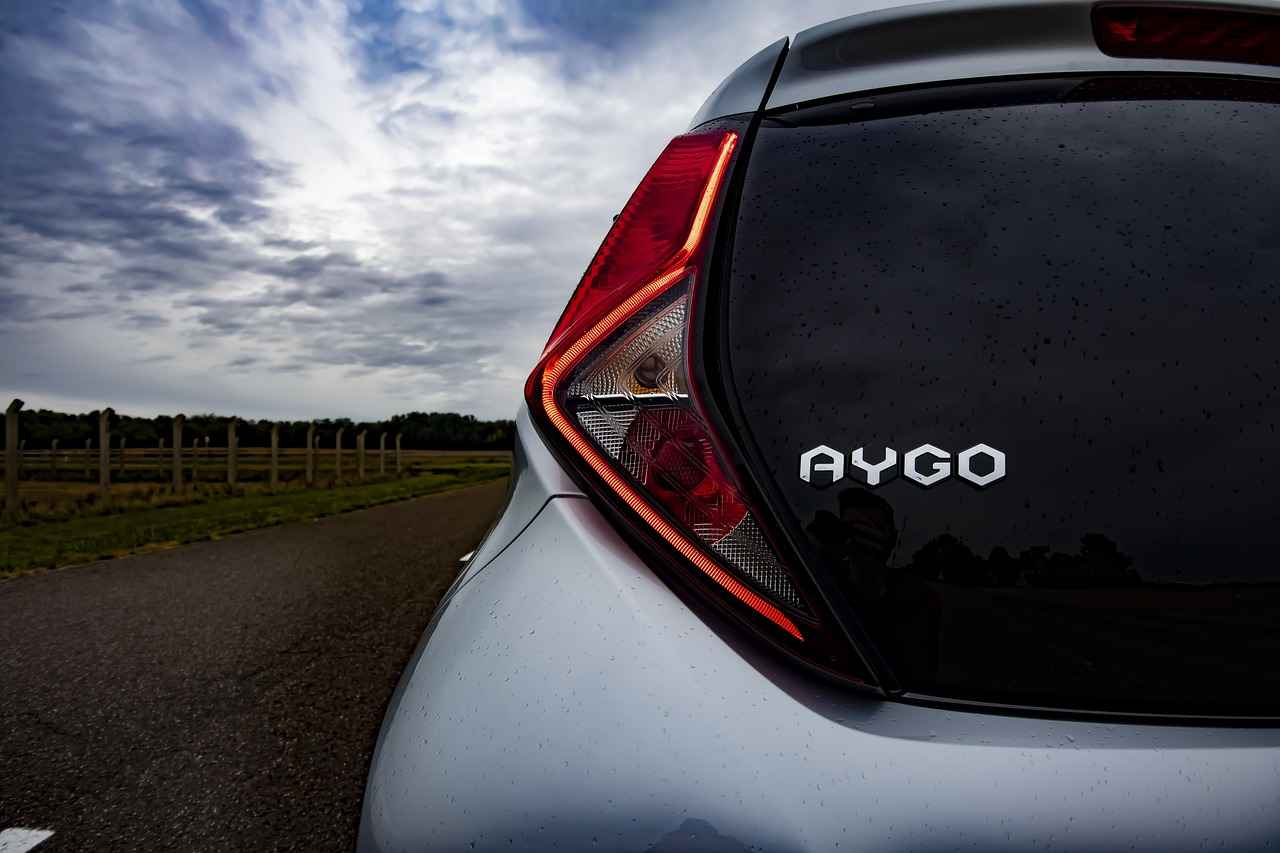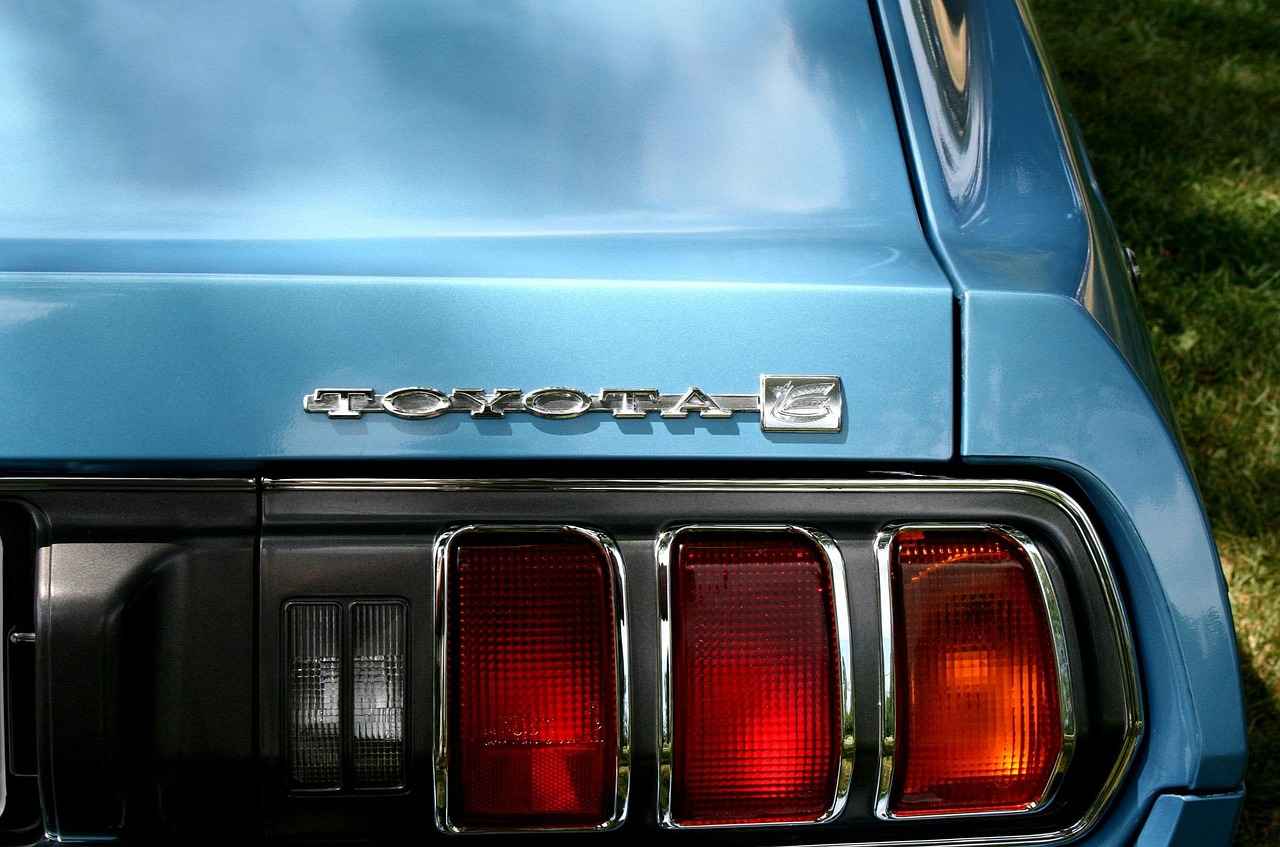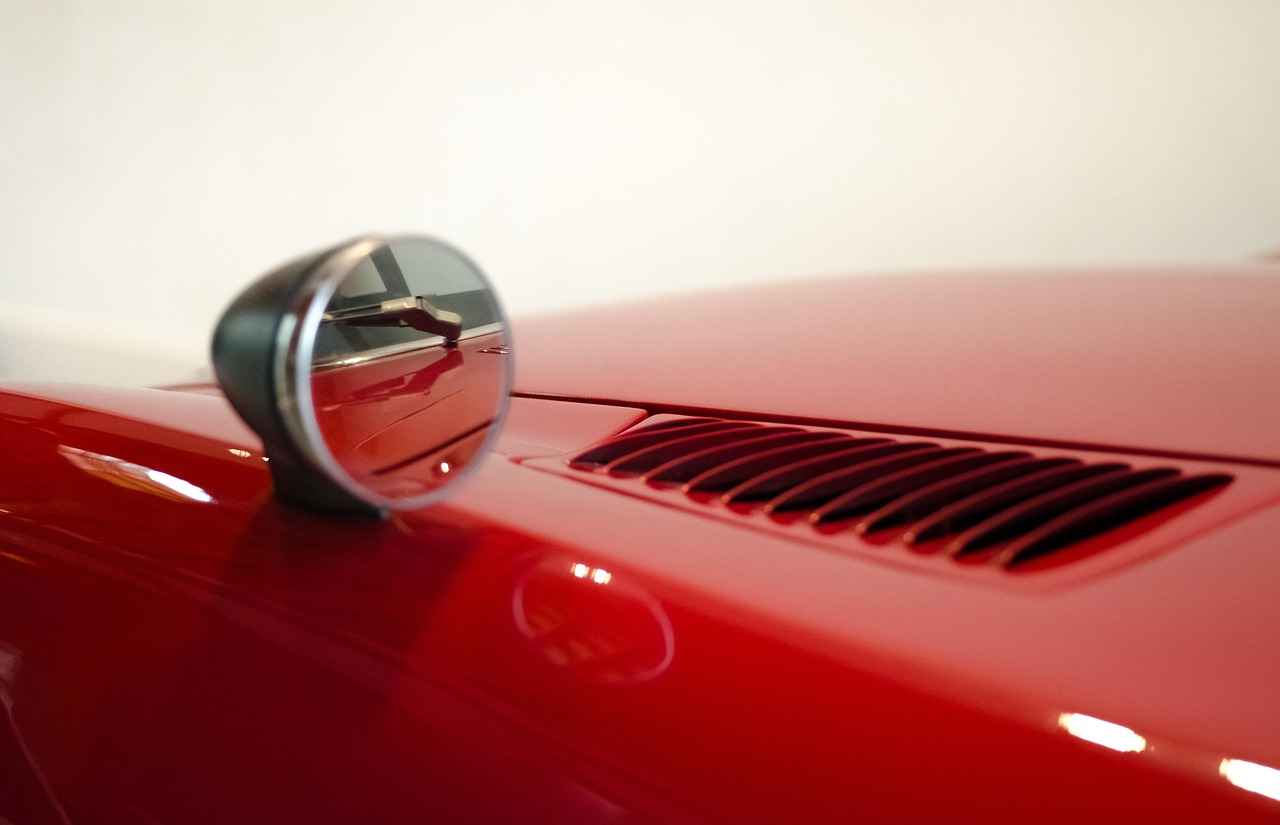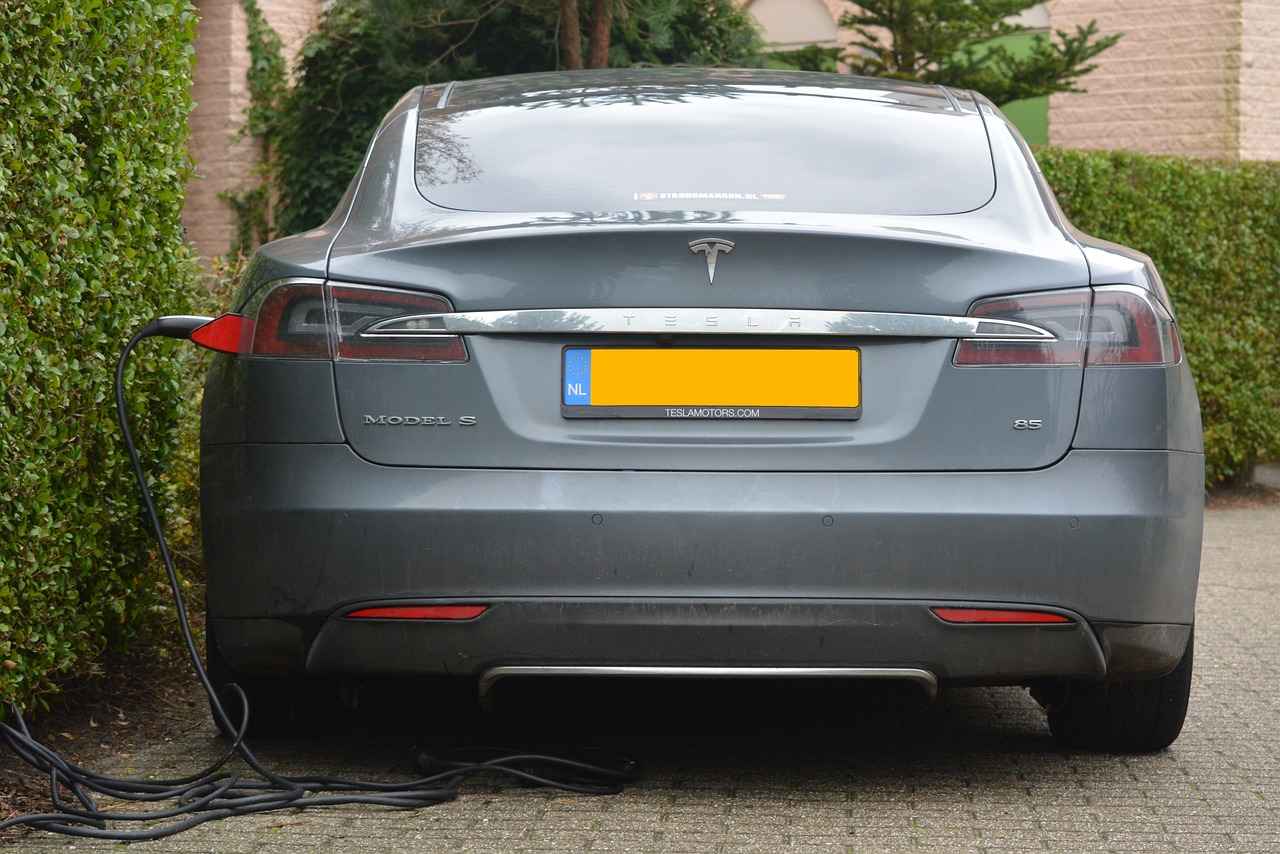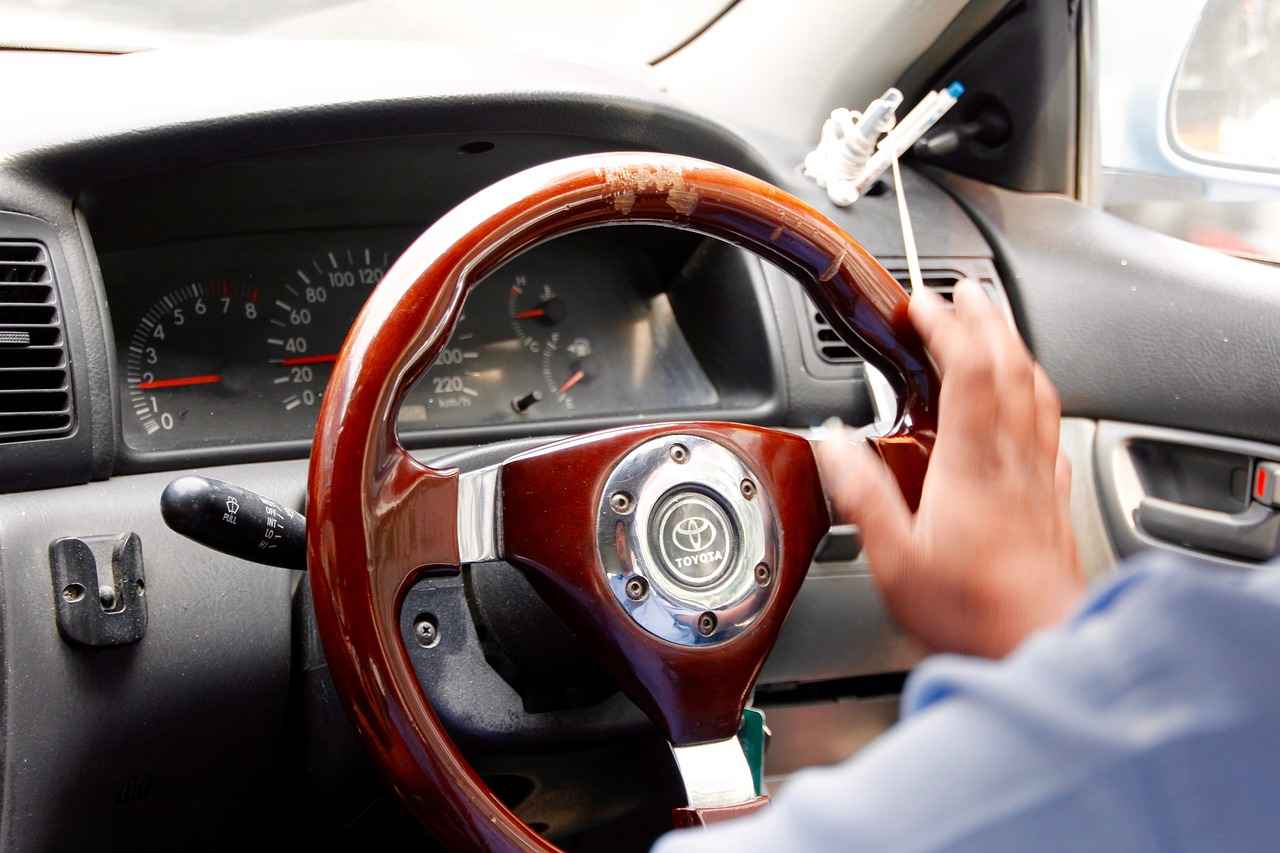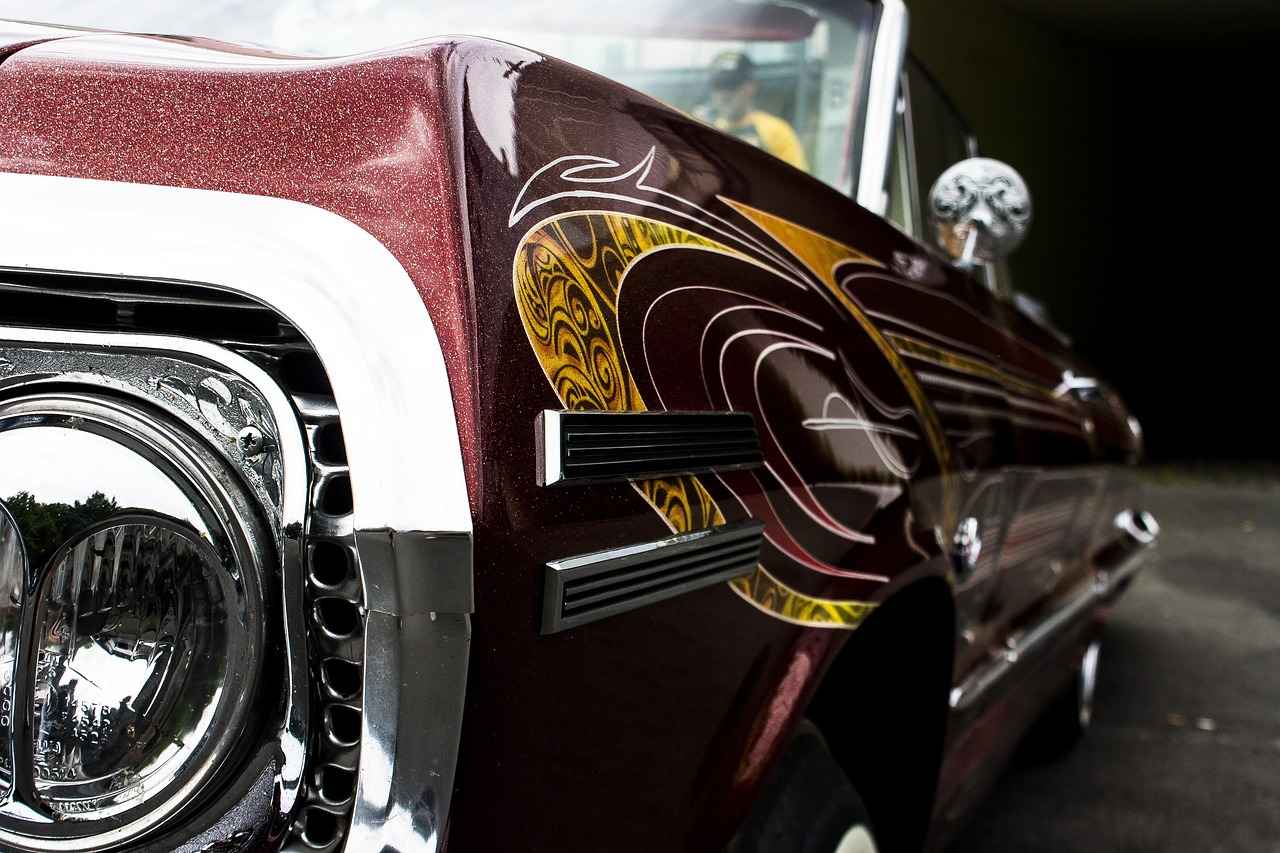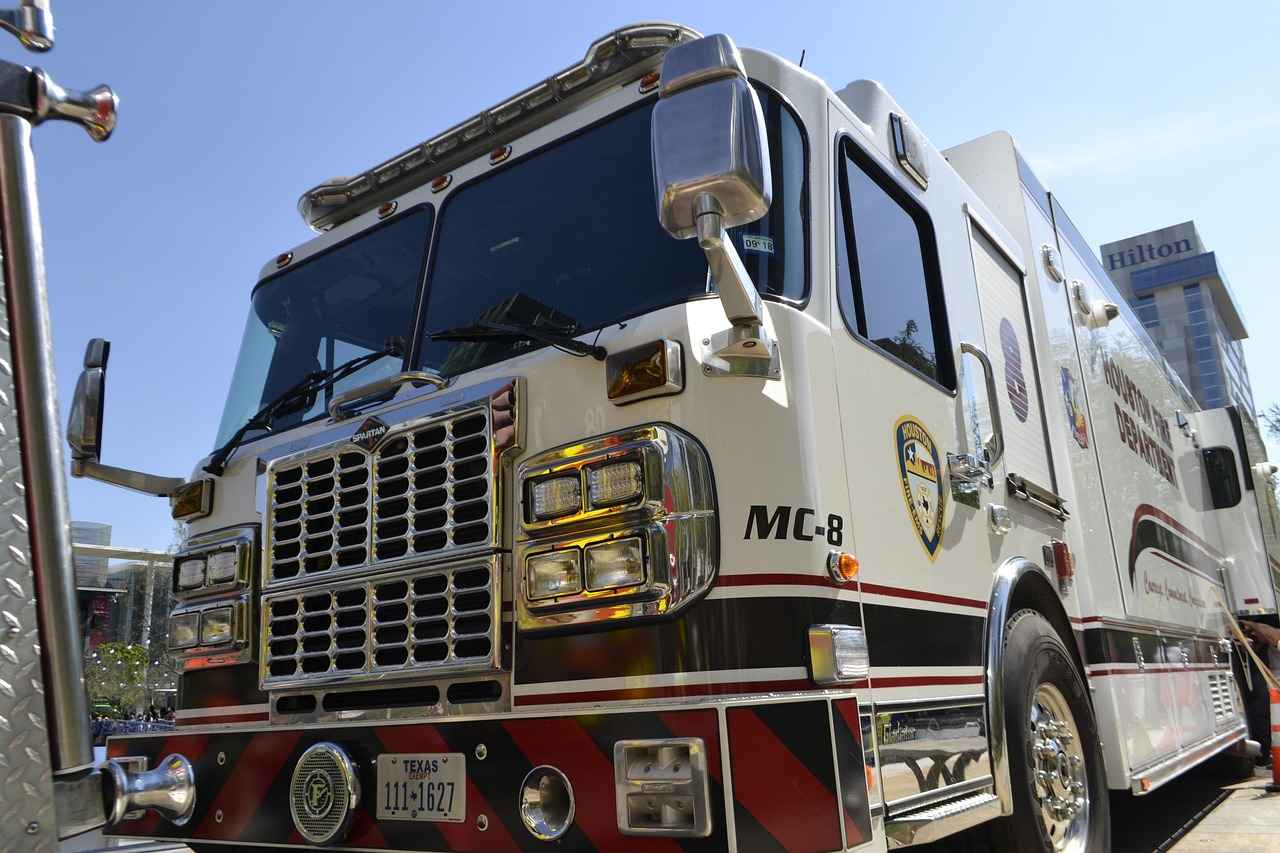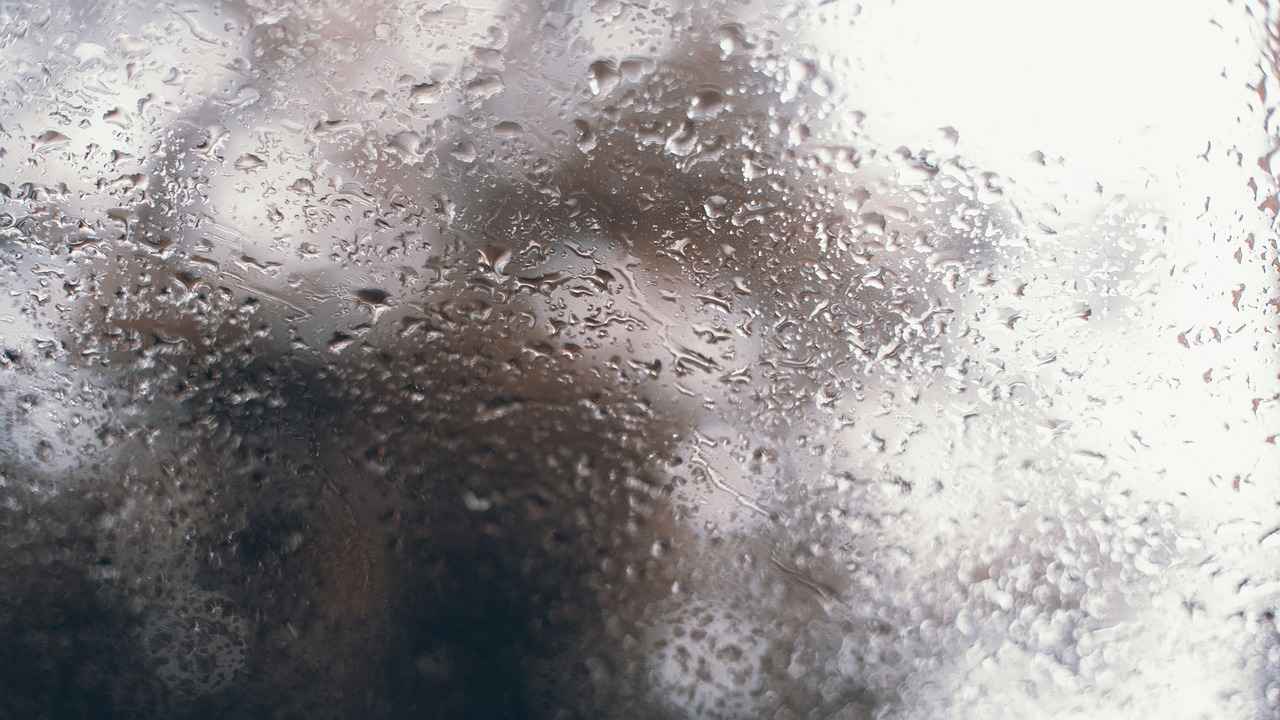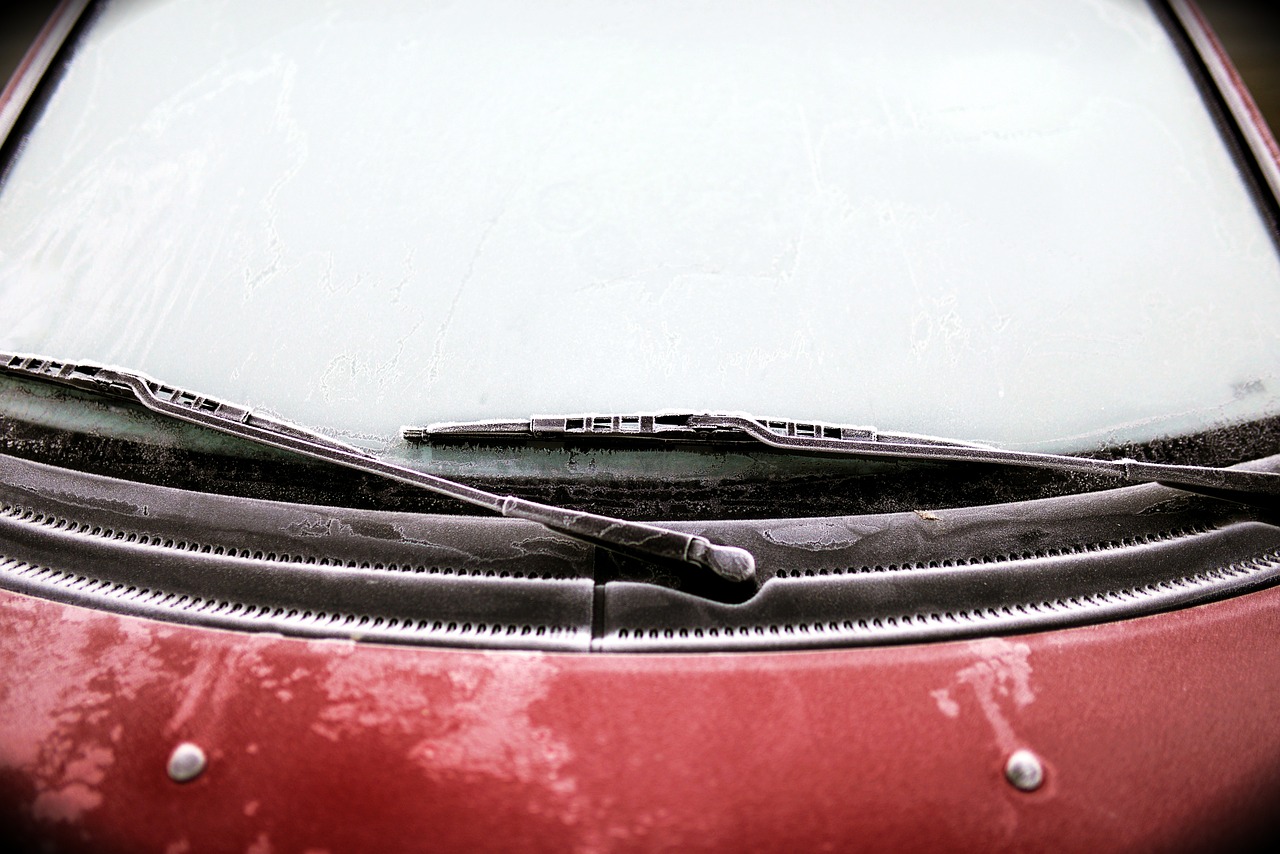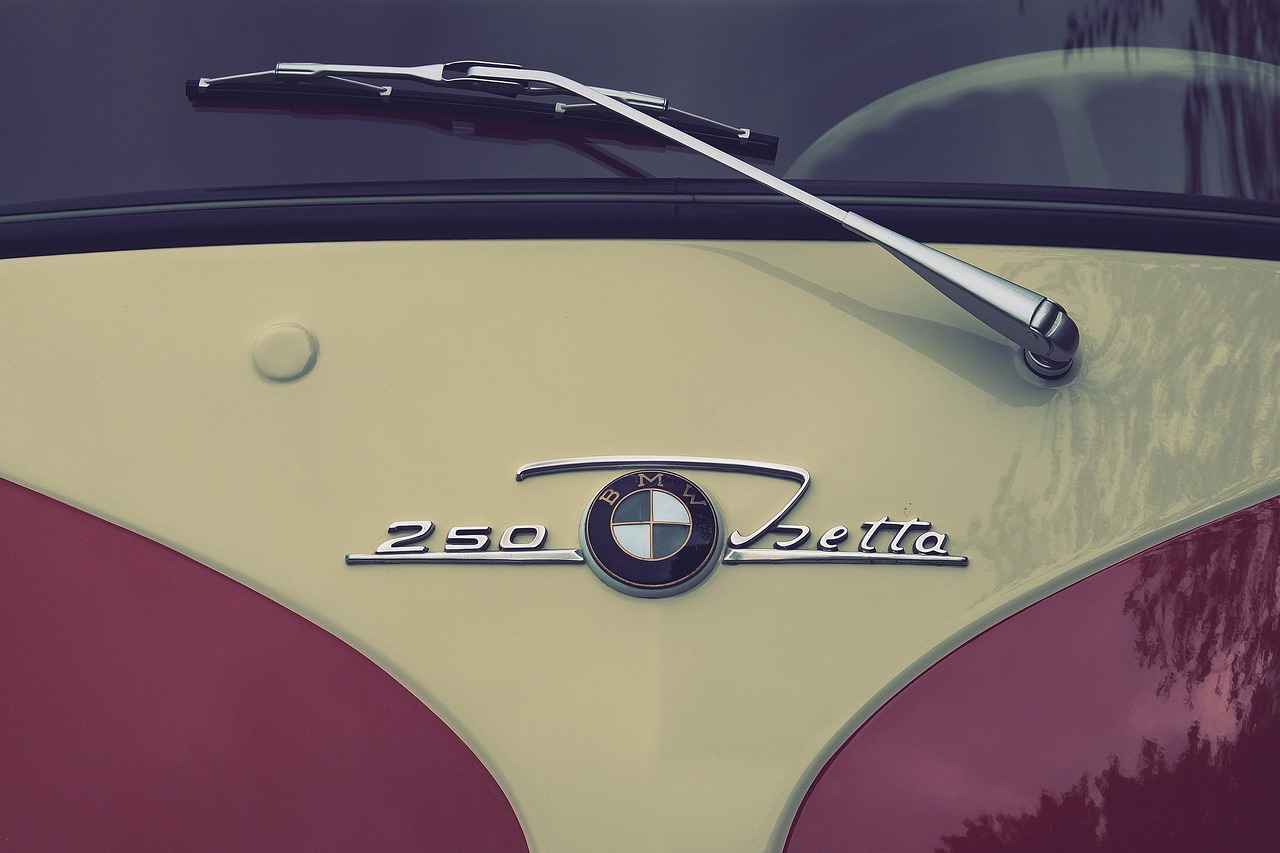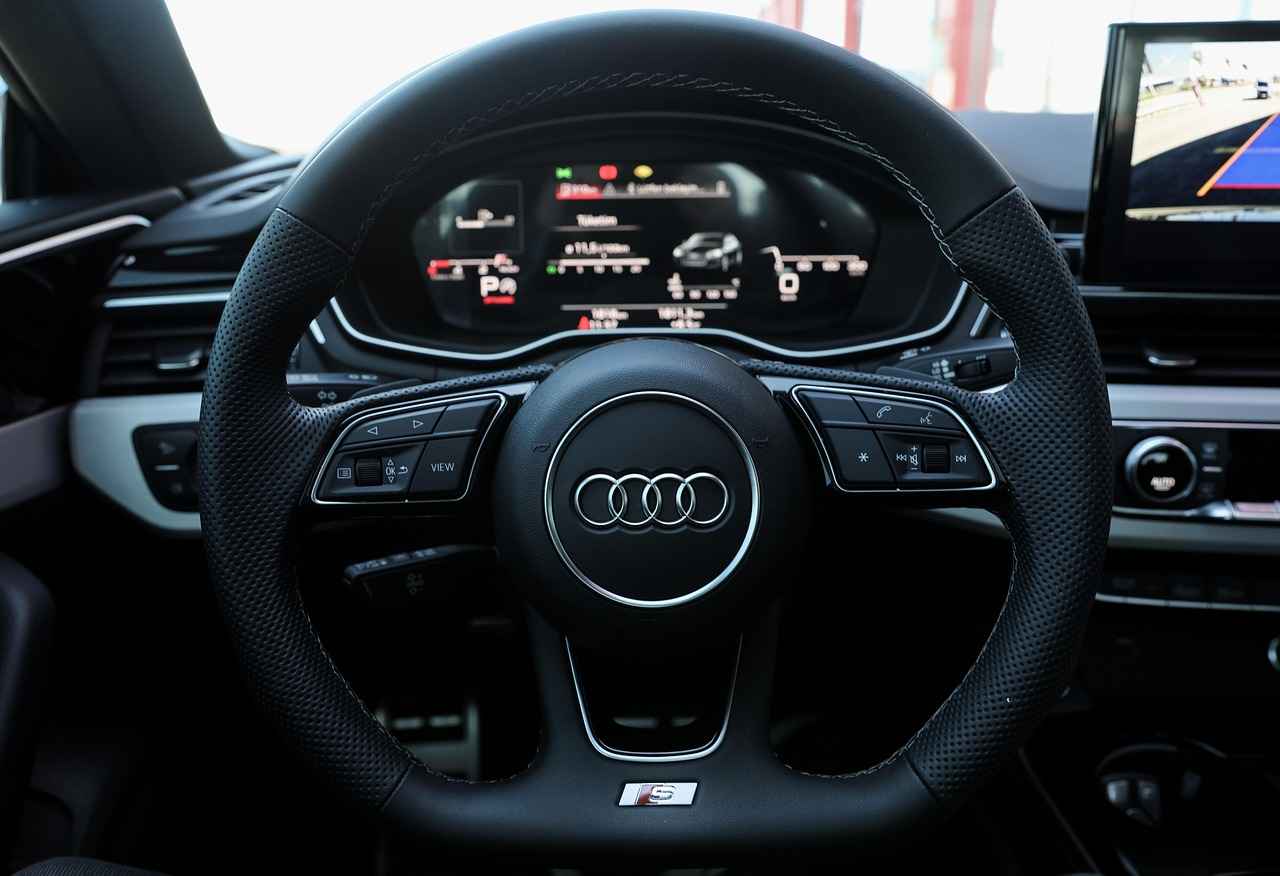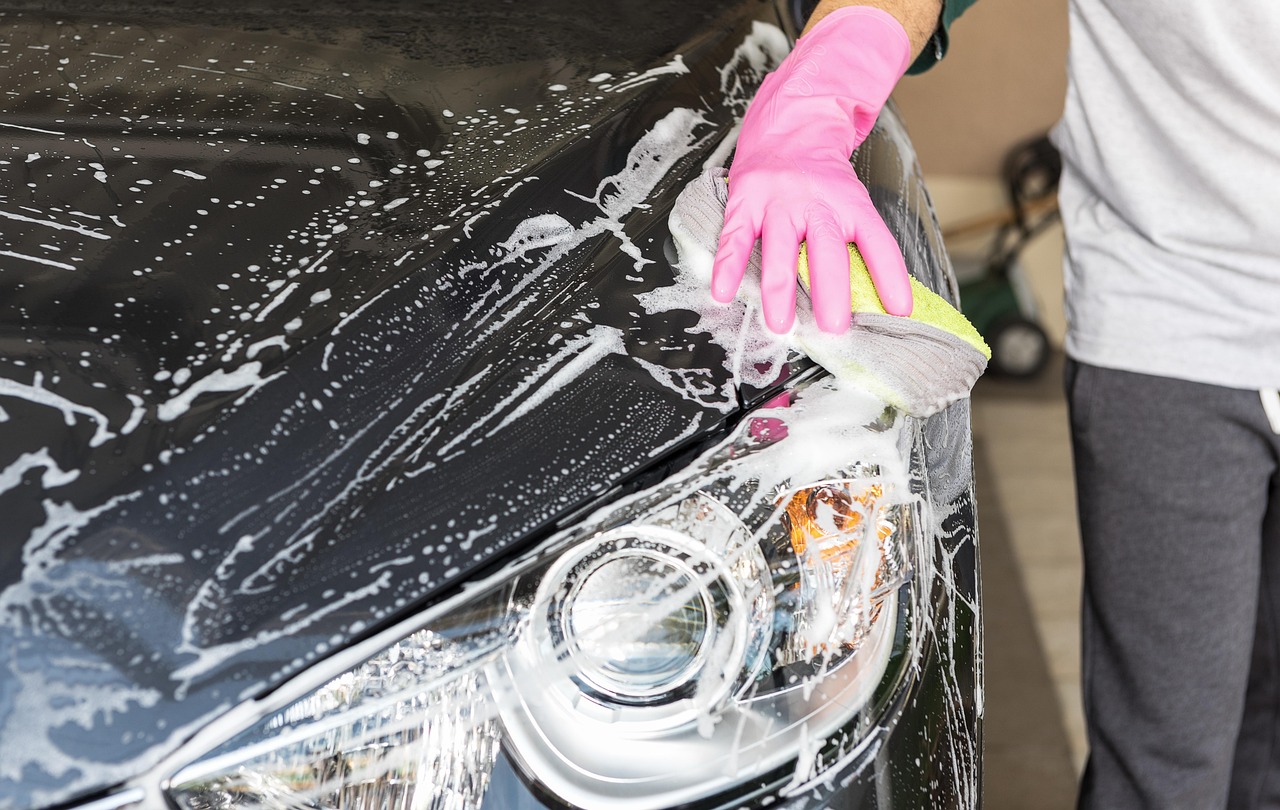In this article, we will delve into the essential aspects of replacing windshield wipers, guiding you through the decision-making process of whether to handle this task yourself or to enlist the help of a professional. Maintaining your vehicle’s visibility is crucial for safe driving, and knowing how to replace your wipers is a valuable skill.
Recognizing the appropriate time to replace your windshield wipers is vital for ensuring road safety. Worn-out wipers can significantly reduce visibility, especially during rain or snow, making timely replacements essential. Generally, it’s advisable to replace your windshield wipers every 6 to 12 months, depending on usage and environmental factors.
Identifying the signs of wear and tear in your wipers is the first step to maintaining a clear view. Common indicators include:
- Streaking: If your wipers leave streaks on the windshield, it’s a clear sign they need replacing.
- Skipping: Wipers that skip across the glass indicate that they are not making proper contact.
- Squeaking: Noises during operation can suggest that the rubber is damaged.
Streaking is a significant concern as it can severely impair your ability to see clearly in adverse weather conditions. Addressing this issue promptly is crucial for your safety on the road. If you notice streaks, don’t delay in replacing your wipers.
Inspecting the rubber blades for cracks or tears is essential. If the rubber appears worn, frayed, or hardened, it’s time to consider replacing your wipers for better performance. Regular checks can help maintain optimal visibility while driving.
Many car owners opt to replace their windshield wipers themselves to save money. Understanding the process can empower you to tackle this task with confidence. Below are some key points to consider:
Replacing windshield wipers generally requires minimal tools. You will typically need:
- A new set of windshield wipers
- A flathead screwdriver (if necessary)
Familiarizing yourself with your vehicle’s specific requirements is key to a successful replacement.
The DIY replacement process is straightforward and typically involves the following steps:
- Lift the wiper arm: Gently pull the wiper arm away from the windshield.
- Remove the old blade: Depending on your wiper type, you may need to press a tab or unscrew it.
- Attach the new blade: Securely attach the new wiper blade, ensuring it clicks into place.
- Lower the wiper arm: Carefully return the wiper arm to its original position.
Following the manufacturer’s instructions will ensure a successful replacement.
While replacing windshield wipers is often a simple task, there are circumstances where seeking professional assistance is advisable. If you are unsure about the process or encounter any complications, a professional can ensure the job is done correctly. Additionally, if your vehicle has specialized wiper systems, consulting a mechanic may be the best option.
In conclusion, maintaining your windshield wipers is crucial for safe driving. Whether you choose to replace them yourself or seek professional help, being informed about the process will empower you to make the best decision for your vehicle’s maintenance.

When Should You Replace Your Windshield Wipers?
When it comes to maintaining your vehicle, one of the most essential yet often overlooked components are the windshield wipers. Understanding when to replace your windshield wipers is crucial for ensuring clear visibility and safe driving, especially during adverse weather conditions. This article delves into the key signs that indicate it’s time for a replacement, along with tips for maintaining optimal wiper performance.
Knowing the right time to replace your windshield wipers can make a significant difference in your driving safety. Regularly inspecting your wipers is important, as worn-out blades can lead to impaired visibility. Here are some common indicators that suggest it’s time for a change:
- Streaking: If you notice streaks on your windshield after using your wipers, this is a clear sign that the rubber is worn out and unable to make proper contact with the glass.
- Skipping: Wipers that skip across the windshield instead of moving smoothly can indicate that they are damaged or bent.
- Squeaking Sounds: If your wipers produce a squeaking noise when in use, the rubber may be deteriorating, leading to ineffective cleaning.
- Cracked or Torn Rubber: Inspecting the rubber blades for visible cracks or tears is vital. If the rubber appears frayed, it’s time to consider replacing your wipers.
- Reduced Effectiveness: If your wipers are not clearing water effectively during rain, it’s a major safety concern and a prompt replacement is necessary.
Streaking on your windshield can severely compromise your ability to see clearly, particularly during heavy rain or snow. This can lead to dangerous driving conditions. Addressing streaking promptly ensures that you maintain a clear line of sight, which is essential for safe navigation on the road.
Generally, it is recommended to replace your windshield wipers every six months to a year, depending on factors such as climate and usage. For example, if you live in an area with heavy rainfall or harsh winters, more frequent replacements may be necessary. Regular maintenance checks can prevent unexpected failures and enhance your driving safety.
Many car owners opt to replace their windshield wipers themselves as a cost-effective solution. Understanding the DIY process can empower you to handle this task with confidence. Here are some practical insights:
Replacing windshield wipers typically requires minimal tools, often just a new set of wipers and possibly a flathead screwdriver. Familiarizing yourself with your vehicle’s specific requirements is essential for a successful replacement.
1. Lift the wiper arm away from the windshield.2. Locate the release tab on the old wiper blade and press it to detach the blade from the arm.3. Align the new wiper blade with the arm and press it into place until you hear a click.4. Gently lower the wiper arm back onto the windshield.5. Repeat the process for the other wiper blade.
Following these steps can ensure a successful replacement, enhancing your vehicle’s safety and performance.
In summary, understanding the signs that indicate it’s time to replace your windshield wipers is essential for maintaining safety on the road. By regularly inspecting your wipers and being aware of their condition, you can ensure that your visibility remains clear, even in challenging weather conditions.

How to Identify Worn Windshield Wipers?
Identifying worn windshield wipers is essential for maintaining clear visibility while driving. Poorly functioning wipers can significantly impair your ability to see the road, especially during adverse weather conditions. Here are some key indicators to help you recognize when it’s time to replace your wipers:
- Streaking: If you notice streaks on your windshield after using the wipers, this is a clear sign that the rubber blades are not making proper contact with the glass. Streaking can lead to reduced visibility, especially in rain.
- Skipping: Wipers that skip across the windshield rather than moving smoothly can indicate that the blades are worn out or damaged. This skipping motion can leave areas of your windshield uncleaned, which is dangerous during heavy rain.
- Squeaking Noises: If your wipers emit a squeaking sound during operation, it could mean that the rubber is hardening or has become damaged. This noise is often a precursor to decreased performance and should be addressed promptly.
- Cracked or Torn Rubber: Regularly inspect the rubber blades for any visible signs of wear, such as cracks, tears, or fraying. If you see any damage, it’s time for a replacement.
- Reduced Effectiveness: If your wipers are not clearing the windshield effectively, even after cleaning the blades, it’s a strong indication that they need to be replaced. This can be particularly concerning during rain or snow.
To ensure optimal performance, it’s recommended to check your wipers regularly, especially before the rainy season or winter months. A simple visual inspection can save you from potential hazards on the road.
Why Is Streaking a Concern?
Streaking on your windshield can severely hinder your ability to see clearly, especially at night or in poor weather conditions. It can create dangerous blind spots and lead to accidents. Addressing this issue promptly not only enhances your visibility but also ensures your safety on the road.
How Do You Check for Rubber Damage?
To check for rubber damage, simply lift the wiper arm away from the windshield and examine the blade closely. Look for any signs of wear, such as cracks, tears, or hardening of the rubber. If you notice any of these issues, it’s time to consider replacing your wipers for improved performance.
How Often Should You Replace Your Wipers?
Typically, windshield wipers should be replaced every six months to a year, depending on usage and environmental conditions. Factors like exposure to sunlight, extreme temperatures, and the frequency of use can affect the lifespan of your wipers. Regular maintenance can help prevent unexpected failures during critical times.
In summary, recognizing the signs of worn windshield wipers is crucial for maintaining safety on the road. By being proactive and attentive to the performance of your wipers, you can ensure a clear view and a safer driving experience.
What Are the Common Signs of Worn Wipers?
When it comes to ensuring your safety on the road, windshield wipers play a crucial role. They not only help maintain visibility during rain but also during other adverse weather conditions. Recognizing when your wipers are worn out is essential for safe driving. Below, we delve into the common signs that indicate it’s time to replace your windshield wipers.
Identifying worn windshield wipers can prevent dangerous driving situations. Here are some key indicators to look out for:
- Streaks on the Windshield: If your wipers leave streaks or smears on the glass, they are no longer effectively clearing water. This can significantly impair your vision, especially during heavy downpours.
- Cracked or Torn Rubber: Inspect the rubber blades for any signs of damage. If you notice cracks, splits, or tears, it’s time to replace them. Damaged rubber not only reduces performance but can also scratch your windshield.
- Noisy Operation: If your wipers make squeaking or chattering noises while in use, this is a clear sign of wear. Noisy wipers can indicate that the rubber is hardening or that the wiper arm is misaligned.
- Reduced Effectiveness in Rain: If you find that your wipers struggle to clear water effectively during rain, it’s a strong indication that they need replacing. Effective wipers should provide a clear view without leaving water behind.
- Worn Out Wiper Blades: Over time, wiper blades can become worn out due to exposure to UV rays, dirt, and other environmental factors. Regularly check for wear and replace them as needed.
Regular maintenance checks can help you catch these issues early. It’s advisable to inspect your wipers at least once every few months, particularly before the rainy season. This proactive approach can help ensure that your visibility remains optimal, reducing the risk of accidents.
Streaking is more than just a nuisance; it can severely affect your ability to see clearly in adverse weather conditions. When your windshield is streaked, it can create a distorted view of the road, making it difficult to see other vehicles, pedestrians, or road signs. Addressing this issue promptly is essential to ensure your safety on the road.
To check for rubber damage, visually inspect the wiper blades. Look for any signs of wear, such as:
- Cracks or splits in the rubber
- Frayed edges or uneven surfaces
- Hardening of the rubber, which can lead to ineffective wiping
If you notice any of these issues, it’s advisable to replace your wipers to maintain optimal performance.
As a general rule, windshield wipers should be replaced every six months to a year, depending on usage and environmental conditions. Factors such as extreme weather, frequent use, and exposure to sunlight can accelerate wear. Regular maintenance can prevent unexpected failures during critical times.
In conclusion, being aware of the common signs of worn windshield wipers can help you maintain a clear view while driving. Regular inspections and timely replacements not only enhance your safety but also improve the overall driving experience.
Why Is Streaking a Concern?
When driving, clear visibility is paramount for safety. One major factor that can hinder your ability to see the road clearly is streaking on your windshield. This issue often arises from worn or damaged windshield wipers, and it can significantly impair your vision, especially during adverse weather conditions such as rain, snow, or fog.
Streaking occurs when the wiper blades fail to make proper contact with the windshield, leaving behind lines of water or debris. This not only obstructs your view but can also create dangerous driving conditions. In fact, studies show that poor visibility is a leading cause of accidents, particularly in inclement weather. Therefore, it is essential to address this issue promptly to ensure your safety on the road.
How Does Streaking Affect Visibility?
- Obscured Vision: Streaks can create blind spots, making it difficult to see other vehicles, pedestrians, or traffic signals.
- Increased Glare: Streaking can cause light to scatter, leading to glare that can further impair your vision.
- Delayed Reaction Time: If your view is obstructed, you may not react quickly enough to sudden changes in traffic, increasing the risk of accidents.
What Causes Streaking?
Several factors can contribute to streaking on your windshield:
- Worn Wiper Blades: Over time, the rubber on wiper blades can crack, tear, or become hardened, leading to ineffective cleaning.
- Improper Installation: If wiper blades are not installed correctly, they may not make full contact with the windshield, causing streaks.
- Dirty Windshield: A buildup of dirt or grime can prevent wipers from functioning effectively, leading to streaking.
How Can You Prevent Streaking?
To maintain clear visibility and prevent streaking, consider the following tips:
- Regular Inspections: Check your wiper blades every few months for signs of wear and replace them as necessary.
- Clean Your Windshield: Keep your windshield clean to ensure that dirt and grime do not interfere with wiper performance.
- Use Quality Wiper Blades: Invest in high-quality wiper blades that are designed to provide optimal performance in various weather conditions.
In conclusion, addressing streaking on your windshield is crucial for maintaining clear visibility while driving. By recognizing the signs of worn wipers and taking proactive measures, you can enhance your safety on the road. Regular maintenance and timely replacements will help ensure that your windshield wipers function effectively, allowing you to navigate adverse weather conditions with confidence.
How Do You Check for Rubber Damage?
When it comes to maintaining your vehicle, ensuring that your windshield wipers are in optimal condition is essential for safe driving. One of the key aspects of this maintenance is checking for rubber damage. This process involves inspecting the rubber blades for any signs of wear and tear, which can significantly affect their performance.
Regularly inspecting your wiper blades can prevent dangerous situations on the road. Worn or damaged wipers can lead to decreased visibility, especially during heavy rain or snow. Therefore, understanding how to check for rubber damage is a crucial skill for any vehicle owner.
- Cracks or Tears: Examine the rubber for any visible cracks or tears. Even small imperfections can lead to decreased effectiveness.
- Fraying Edges: Check the edges of the blades. If they appear frayed or worn down, it’s a clear sign that replacement is necessary.
- Stiffness: The rubber should be flexible. If it feels stiff or rigid, it may not make proper contact with the windshield.
- Streaking or Skipping: During operation, if you notice streaks or if the wipers skip across the glass, it indicates that the rubber is not functioning correctly.
To effectively check your wiper blades, follow these steps:
1. Lift the wiper arm away from the windshield.2. Examine the rubber blade closely for any visible damage.3. Run your fingers along the edge to feel for any irregularities.4. Test the wiper function to observe its performance.
If your inspection reveals any of the issues mentioned above, it’s time to consider replacing your wipers. Regular replacements are recommended every six months to a year, but this can vary based on environmental conditions and usage. For example, if you frequently drive in harsh weather, more frequent checks and replacements may be necessary.
Replacing worn wipers not only enhances visibility but also contributes to overall safety while driving. New wipers provide a clear view, allowing for better reaction times in adverse conditions. Additionally, they help avoid potential accidents caused by impaired visibility.
Yes, checking your wiper blades is a simple task that you can perform yourself. It requires no special tools and can be done quickly during routine vehicle maintenance. By taking the time to inspect your wipers, you can ensure a safer driving experience.
In summary, regularly checking your windshield wipers for rubber damage is a vital part of vehicle maintenance. By being proactive and addressing any issues promptly, you can significantly enhance your driving safety and comfort. Remember, clear visibility is crucial, and functioning wipers are key to achieving that.
How Often Should You Replace Your Wipers?
When it comes to vehicle maintenance, one of the most frequently overlooked components is the windshield wipers. Proper visibility is essential for safe driving, and that makes understanding how often to replace your wipers critically important. In this section, we will delve into the factors that influence the lifespan of windshield wipers and provide you with essential tips for ensuring your wipers are always in optimal condition.
Typically, windshield wipers should be replaced every six months to a year, but this can vary based on several factors:
- Usage: Frequent use, especially in harsh weather conditions, can wear out wipers more quickly.
- Environmental Conditions: Exposure to extreme temperatures, UV rays, and harsh chemicals can degrade the rubber blades faster.
- Quality of Wipers: Higher-quality wipers may last longer than cheaper alternatives.
Recognizing the signs that your windshield wipers need replacing is crucial for maintaining visibility. Here are some common indicators:
- Streaking: If your wipers leave streaks on the windshield, it’s a clear sign that they are no longer effective.
- Skipping: Wipers that skip across the glass can create dangerous blind spots.
- Squeaking Noises: Unusual sounds during operation often indicate that the rubber is worn out.
- Cracks or Tears: Visually inspect the rubber blades for any visible damage.
Regularly replacing your windshield wipers not only enhances visibility but also contributes to overall road safety. Worn wipers can lead to unexpected failures during critical driving situations, such as heavy rain or snow. By adhering to a maintenance schedule, you can avoid these potentially dangerous scenarios.
To ensure your windshield wipers last as long as possible, consider the following tips:
- Clean the Blades: Regularly wipe the rubber blades with a damp cloth to remove dirt and debris.
- Use the Wipers Sparingly: Avoid using wipers on dry glass or in freezing conditions without defrosting first.
- Store Your Vehicle Properly: If possible, park in a garage or shaded area to protect the wipers from UV damage.
In summary, maintaining your windshield wipers is a straightforward yet crucial aspect of vehicle care. By understanding when to replace them and recognizing the signs of wear, you can ensure that your driving experience remains safe and enjoyable. Remember, regular maintenance is key to preventing unexpected failures and ensuring your visibility on the road.

Can You Replace Windshield Wipers Yourself?
Replacing windshield wipers can seem daunting, but many car owners find it a straightforward task that can save them money. Understanding the process not only empowers you but also ensures that your vehicle remains safe and functional. In this section, we will explore the steps involved in replacing windshield wipers yourself, the benefits of doing so, and when it might be better to seek professional help.
Absolutely! Replacing windshield wipers is a task that most car owners can handle with a little guidance. The process is typically quick and requires minimal tools, making it an appealing option for those looking to save on maintenance costs. Here’s what you need to know:
- New Windshield Wipers: Ensure you purchase the correct size and type for your vehicle.
- Flathead Screwdriver: This may be needed to help remove the old wipers.
- Owner’s Manual: Always refer to your vehicle’s manual for specific instructions related to your model.
Follow these simple steps to replace your windshield wipers:
- Lift the Wiper Arm: Gently pull the wiper arm away from the windshield until it is in a vertical position.
- Remove the Old Wiper Blade: Locate the release tab on the wiper blade and press it to detach the old blade from the arm.
- Attach the New Wiper Blade: Align the new wiper blade with the arm and push until you hear a click, indicating it is securely attached.
- Lower the Wiper Arm: Carefully place the wiper arm back against the windshield.
There are several advantages to opting for a DIY approach:
- Cost Savings: Performing the replacement yourself eliminates labor costs associated with professional services.
- Convenience: You can replace the wipers at your own convenience without needing to schedule an appointment.
- Learning Experience: Gaining hands-on experience with your vehicle can increase your confidence for future maintenance tasks.
While DIY replacement is often feasible, there are times when professional assistance may be necessary. If you encounter any of the following issues, consider consulting a mechanic:
- If the wiper arm is damaged or not functioning properly.
- If you are unsure about the correct wiper size or type for your vehicle.
- If you experience persistent issues even after replacing the wipers.
In conclusion, replacing windshield wipers is a manageable task for many car owners. By understanding the process and being aware of the signs that indicate when to replace your wipers, you can maintain clear visibility and enhance your driving safety. Whether you choose to tackle this task yourself or seek professional help, being informed is the key to effective vehicle maintenance.
What Tools Do You Need for DIY Wiper Replacement?
When it comes to maintaining your vehicle, one of the most straightforward tasks is replacing your windshield wipers. This essential maintenance not only enhances your visibility during rain or snow but also ensures your safety on the road. In this section, we will delve into the tools required for a successful DIY wiper replacement, making the process as seamless as possible.
Replacing windshield wipers generally requires minimal tools, which is one of the reasons many car owners opt for a DIY approach. Below are the primary tools you will need:
- New Set of Windshield Wipers: The most crucial item is, of course, a new set of windshield wipers that are compatible with your vehicle.
- Flathead Screwdriver: While not always necessary, a flathead screwdriver can be helpful for removing the old wipers, especially if they are secured with screws.
- Owner’s Manual: Having your vehicle’s owner manual on hand can provide specific instructions and details about the wiper replacement process.
- Cleaning Cloth: A microfiber cloth is useful for cleaning the windshield before and after replacing the wipers.
Before you begin the replacement process, it is essential to familiarize yourself with your vehicle’s specific requirements. Different car models may have unique wiper attachment styles, such as:
- Hook Type: This is the most common style, where the wiper blade hooks onto the arm.
- Pin Type: Some vehicles use a pin to secure the wiper blade, requiring a different method for removal.
- Bayonet Type: This style involves a more complex attachment that may need specific tools for removal.
By understanding your vehicle’s wiper system, you can avoid unnecessary complications during the replacement process.
Once you have gathered your tools and familiarized yourself with your vehicle, you can follow these step-by-step instructions for a successful DIY wiper replacement:
- Lift the Wiper Arm: Gently lift the wiper arm away from the windshield until it is in a vertical position.
- Remove the Old Wiper Blade: Depending on the attachment style, either unhook the blade or use a screwdriver to loosen any screws holding it in place.
- Attach the New Wiper Blade: Align the new wiper blade with the attachment point and secure it according to your vehicle’s specifications.
- Lower the Wiper Arm: Carefully lower the wiper arm back onto the windshield.
- Test the New Wipers: Turn on your vehicle and test the new wipers to ensure they operate smoothly and effectively.
By following these steps, you can confidently replace your windshield wipers without the need for professional assistance.
To prolong the life of your new windshield wipers, consider these maintenance tips:
- Regular Cleaning: Clean the wiper blades and windshield regularly to remove dirt and debris that can cause wear.
- Seasonal Checks: Inspect your wipers at the change of each season to ensure they are in good condition.
- Store Properly: If you live in an area with extreme temperatures, consider removing the wipers during harsh weather to prevent damage.
By being proactive with your windshield wiper maintenance, you can ensure optimal performance and safety while driving.
What Is the Step-by-Step Process for DIY Replacement?
When it comes to maintaining your vehicle, replacing windshield wipers is an essential task that ensures your safety on the road. Knowing how to do this yourself can save you time and money. Below is a detailed guide on the step-by-step process for DIY replacement of windshield wipers.
Replacing windshield wipers may seem daunting, but with the right approach, it can be a straightforward task. Here’s how you can do it:
- Gather Your Materials: Before you start, ensure you have the new wiper blades, which are specific to your vehicle model. You may also need a flathead screwdriver, depending on the type of wiper arms.
- Lift the Wiper Arm: Begin by lifting the wiper arm away from the windshield. This will give you more space to work and prevent the arm from snapping back onto the glass.
- Remove the Old Wiper Blade: Look for the release tab or button on the wiper blade. Press this tab while sliding the old blade off the wiper arm. If it’s stuck, gently wiggle it back and forth until it comes loose.
- Attach the New Wiper Blade: Align the new wiper blade with the wiper arm and slide it into place. You should hear a click when it is securely attached. Make sure it is firmly in position to avoid any issues during operation.
- Lower the Wiper Arm: Once the new blade is attached, carefully lower the wiper arm back onto the windshield. Be cautious not to let it drop, as this can crack the glass.
- Test the Wipers: Turn on your vehicle and activate the windshield wipers to ensure they are functioning correctly. Check for any unusual noises or streaking, which could indicate improper installation.
Following these steps will help you successfully replace your windshield wipers without needing professional assistance. It’s important to refer to your vehicle’s manual for specific instructions related to your make and model, as some cars may have unique features.
Adhering to the manufacturer’s guidelines is crucial for a successful wiper blade replacement. Each vehicle may have different mechanisms or blade types, and using the wrong method can lead to damage. Always consult your owner’s manual for detailed instructions tailored to your vehicle.
- Cost-Effective: Performing the replacement yourself saves you the expense of labor costs at a repair shop.
- Time-Saving: You can complete the task on your schedule, without waiting for an appointment at a garage.
- Empowerment: Gaining hands-on experience with your vehicle can build your confidence in handling future maintenance tasks.
In conclusion, replacing windshield wipers is a manageable task that can enhance your driving safety. By following the outlined steps and utilizing the right tools, you can ensure that your wipers are in top condition, ready to tackle any weather conditions. Regular maintenance of your windshield wipers not only improves visibility but also contributes to the overall longevity of your vehicle.
In this article, we explore the ins and outs of replacing windshield wipers, helping you decide whether to tackle it yourself or seek professional assistance for optimal vehicle maintenance.
Understanding the signs that indicate it’s time to replace your windshield wipers is crucial for safe driving. Worn wipers can impair visibility, making timely replacements essential for road safety. Common indicators include:
- Streaks on the windshield
- Rubber that is cracked or torn
- Reduced effectiveness during rain
Recognizing the signs of wear and tear in your wipers is the first step toward ensuring a clear view. Look out for:
- Streaking: This can severely affect your ability to see clearly in adverse weather conditions.
- Skipping: If the wipers skip across the windshield, they may not be making proper contact.
- Squeaking noises: This sound often indicates that the rubber is worn out.
Typically, windshield wipers should be replaced every six months to a year, depending on usage and environmental conditions. Regular maintenance can prevent unexpected failures during critical times, ensuring that you maintain optimal visibility while driving.
Many car owners choose to replace their windshield wipers themselves to save money. Understanding the process can empower you to tackle this task confidently. Here are some essential points to consider:
Replacing windshield wipers generally requires minimal tools, often just a new set of wipers and possibly a flathead screwdriver. Familiarizing yourself with your vehicle’s specific requirements is key. Common tools include:
- New windshield wiper blades
- Flathead screwdriver (if needed)
The DIY replacement process typically involves:
- Lift the wiper arm: This provides access to the wiper blade.
- Remove the old blade: This may require pressing a tab or sliding it off.
- Attach the new blade: Ensure it clicks into place securely.
Following manufacturer instructions can ensure a successful replacement.
While many can handle wiper replacements, there are situations where seeking professional assistance is advisable:
- If you’re unsure about the compatibility of the wipers with your vehicle.
- When dealing with complex wiper systems or additional components.
- If you lack the time or tools to perform the replacement safely.
In summary, understanding when and how to replace your windshield wipers is essential for maintaining your vehicle’s safety and performance. Whether you choose to do it yourself or seek professional help, ensuring that your wipers are in good condition can significantly enhance your driving experience.
Frequently Asked Questions
- How do I know when to replace my windshield wipers?
If your wipers are leaving streaks, skipping, or making squeaking noises, it’s time for a replacement. Regularly check for any visible damage like cracks or tears in the rubber.
- Can I replace my windshield wipers myself?
Absolutely! Replacing windshield wipers is a straightforward task. All you typically need is a new set of wipers and maybe a flathead screwdriver. Just follow the manufacturer’s instructions for your vehicle.
- How often should I change my wipers?
It’s recommended to replace your windshield wipers every six months to a year. However, factors like weather conditions and usage can affect this timeline, so keep an eye on their performance.
- What tools do I need for a DIY wiper replacement?
Most of the time, all you need is a new set of wipers. A flathead screwdriver may come in handy, depending on your vehicle’s design, but usually, it’s a simple swap!
- Why is it important to have good windshield wipers?
Good windshield wipers are crucial for maintaining visibility while driving, especially in rain or snow. Worn wipers can lead to dangerous driving conditions, so don’t overlook their maintenance!
